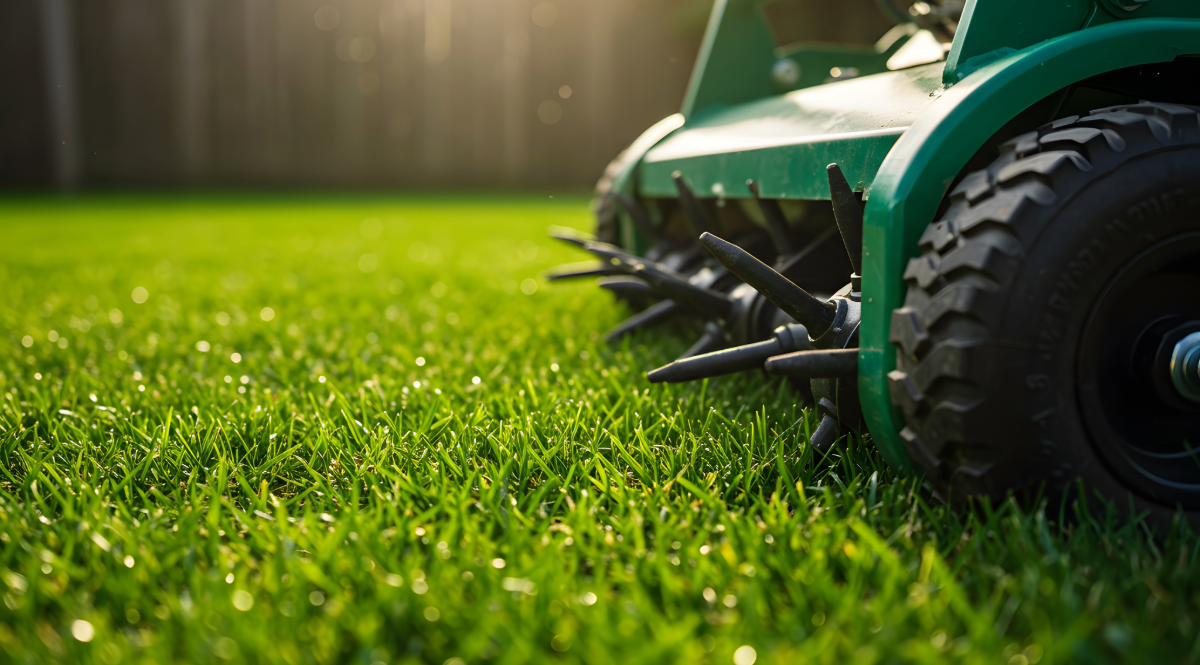A lush, green lawn doesn’t just happen on its own—it requires care and maintenance. Two of the most important services for maintaining a thick, healthy lawn are aeration and seeding. These two practices work together to promote strong root growth, improve soil conditions, and ensure a dense, vibrant lawn that can withstand stress from weather, foot traffic, and pests.
If you’re serious about having the best-looking lawn in the neighborhood, here’s why aeration and seeding should be part of your lawn care routine.
What Is Lawn Aeration?
Lawn aeration is the process of perforating the soil with small holes to allow air, water, and nutrients to penetrate deep into the root zone. Over time, soil becomes compacted due to foot traffic, lawnmower use, and even natural settling. This compaction restricts root growth and limits the movement of essential nutrients, water, and oxygen.
By aerating your lawn, you’re relieving soil compaction and creating a better environment for your grass to thrive.
Benefits of Lawn Aeration:
- Stronger Roots – Loosening the soil allows grass roots to grow deeper, creating a healthier and more resilient lawn.
- Improved Water Absorption – Aerated soil absorbs water more effectively, reducing runoff and minimizing puddling.
- Better Nutrient Uptake – Fertilizer can reach the root zone more easily, making treatments more effective.
- Reduced Thatch Buildup – Thatch (a layer of dead grass and organic matter) can block nutrients and water. Aeration helps break it down naturally.
What Is Overseeding?
Overseeding is the process of spreading grass seed over an existing lawn to thicken thin areas, repair bare spots, and introduce stronger grass varieties. This is especially important in older lawns where grass may start to thin due to age, stress, or disease.
Seeding is most effective when done immediately after aeration because the holes created by aeration provide the perfect environment for seeds to take root.
Benefits of Overseeding:
- Fills in Bare Spots – Helps patch thin or damaged areas for a more uniform lawn.
- Introduces Disease-Resistant Grass – Newer grass varieties are often more resistant to diseases and pests.
- Improves Turf Density – A thick lawn naturally crowds out weeds and reduces weed growth.
- Enhances Lawn Appearance – A properly overseeded lawn looks greener, fuller, and healthier year-round.
Why Aeration and Seeding Work Best Together
Aeration and seeding go hand in hand because aeration creates the ideal conditions for new grass seed to germinate. Without aeration, seeds may struggle to establish due to compacted soil or thatch buildup. By combining these two services, you’re maximizing your lawn’s potential for growth and ensuring that your investment in seeding pays off.
Best Time for Aeration and Seeding:
Early Fall (September – October) – The best time to aerate and seed because the soil is still warm, but the cooler air reduces stress on new seedlings.
Spring (March – April) – Can also be effective, but competition from weeds may be higher.
Final Thoughts: Invest in Your Lawn’s Future
Aeration and seeding are two of the most important things you can do to maintain a healthy, thick, and resilient lawn. If your grass looks thin, patchy, or struggles to grow, these services can restore and revitalize your lawn.
At Elements Lawn & Pest, we specialize in professional aeration and seeding services to help your lawn thrive. Contact us today to schedule your service and give your lawn the boost it deserves!

